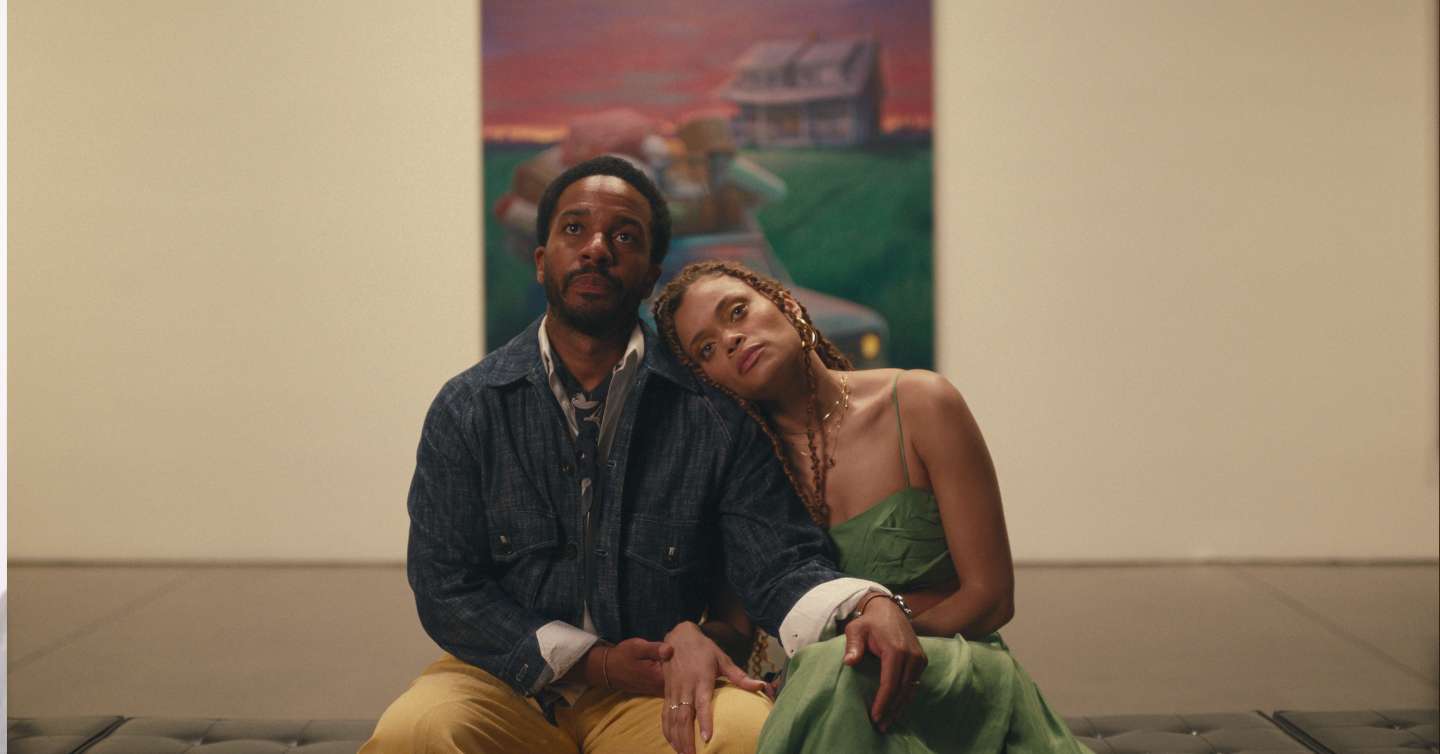In the new film “Exhibiting Forgiveness,” releasing this week from Roadside Attractions, Tarrell (André Holland) is an accomplished painter who lives with his wife, Aisha (Andra Day) and their son, Jermaine. Tarrell deals with the pain of his paint by throwing himself into his work and trying to leave the wounds behind. When his estranged father La’Ron (John Earl Jelks) re-enters his life, he’s forced to consider what it truly means to forgive.
Writer-director Titus Kaphar drew from his own experience, weaving weighty topics of faith and forgiveness throughout. In this interview for BeliefNet, he discusses the role of faith and the complexities of forgiving and forgetting.

I want to ask you about the genesis of the project, where it started percolating in your heart to tell this story.
“It started with my sons. I really wanted to make sure that I wasn’t passing on some of the baggage that I was carrying to them. My boys are are now 15 and 17, and my oldest is about to go off to college next year. I just found myself realizing that all of those times of saying, “I’ll tell you when you’re older, I’ll tell you when you’re older,” and those opportunities were disappearing quickly. I felt like it was time for me to sit down and begin to write a little bit. I started writing, not a script as much as I was just trying to find a way to tell my kids about where their father came from and some of the things that I had gone through. I wrote in the mornings, and then I would go to the studio and the afternoon, after dropping my kids off at school, and I would paint. And I would paint based on the things that I had been writing in the morning. So, by the time I was done, I had a series of paintings, and this text. It was a while after before it became a script. And when it became a script, things change. But it started with my sons.”
There is faith in this movie, but it doesn’t present easy answers. The father kind of uses a little bit as a crutch, or as maybe a “get out of consequences free” card. It’s a little more complicated than a normal, cut and dried, “We’re moving past this.” So, I want to ask about faith as a backdrop for these discussions.
“Faith is more than a backdrop for it. I know that I am here because of the prayers of the righteous women in my family. My grandmother used to wake up at four o’clock in the morning and pray for every single one of her grandchildren. The people who love me most in the world are people of faith. The reason that I have made it as far as I have made it, is because of that cover. There’s never been any question about that in my mind. At the same time, I recognize that in my own family, I’ve seen ways in which people I care about and people I love are entering into damaging relationships again and again and again because of what I think is a misunderstanding of, frankly, what forgiveness actually means. So, faith is, faith is interwoven in this story, but it is not a story where I’m trying to give you easy answers. What I’m trying to do is make space for your questions.”
As I’m watching the film, I feel like I would like for it to inspire people to forgive—radical forgiveness, again, not easy answers, but forgiveness that we need to practice a little bit more in the world. Would you agree?
“Yeah. What I hope that the film delivers is hope, honestly, that what you go through when watching this film helps you realize that the suffering of the last generation doesn’t have to come on to the next generation if we actually deal with the baggage that we’re carrying. I also hope that the film presents a definition of forgiveness that actually makes it easier for folks to incorporate into their journeys. I think we often think about forgiveness as a kind of forgive and forget. And to use a scriptural reference, Jesus died on the cross, and this is the forgiveness that we talk about—who’s going to forget the cross? We’re not going to forget the cross. And yet, as we, as we go through our own experiences in life, where people, we know people are suffering, and they have suffered harsh things, we tell them, “Forgive and forget.” And I just think that that can be incredibly damaging to someone who’s trying on this journey of healing. And it does a thing where it pushes victims into pretending like something has happened that has not happened. I just hope that the film itself presents a different kind of a different possibility for the definition of appealing for forgiveness.”
“I think it’s really damaging when we tell people who have been hurt to pretend like they haven’t been hurt. One of the the moments in the film, with the nail, that is not just arbitrary, arbitrary, gratuitous moment of blood in the film. That’s not what it what it is like this, symbolic, of course, this, this, this puncture, this wound, in some ways, is a physical manifestation of the kinds of wounds that we carry. When you tell somebody to “forget it,” that’s not going to work. But what you can say to somebody is “You know what, I’m no longer carrying this burden anymore, that debt that you owe me from the harm that you’ve done. I release you from that, you are free of that.” Even in that, you can still say, my taking me this way, and your journey is taking you that way. And that’s okay. But the idea that forgiving has to mean that we going to go out and have a beer, I just don’t think that that’s always a situation. It can be sometimes, but it is not a requirement for forgiveness.”
As we’re having this discussion, it just reminds me, when I was a kid, I burned my fingers on a lantern. It hasn’t hurt since, but I still have the scars. I have the memory of it, and I have the souvenir of it. But it doesn’t hurt me anymore. No. So I think maybe that’s a good point that we can forgive, and there’s a scar there, but it doesn’t have to hold us back, and we don’t have to carry the pain around anymore. We can release that pain.
“There’s another piece to your analogy, and that is that scar reminds you not to do that again. If I say, ‘Let me erase that scar,’ then that lesson isn’t learned in the same kind of way.”
DEWAYNE HAMBY is a communications specialist and longtime journalist covering faith-based music, entertainment, books, and the retail industry. He is a member of the Critics Choice Association and the author of the book Gratitude Adjustment. Connect with him at on Facebook, Twitter, YouTube or InstaGram.


